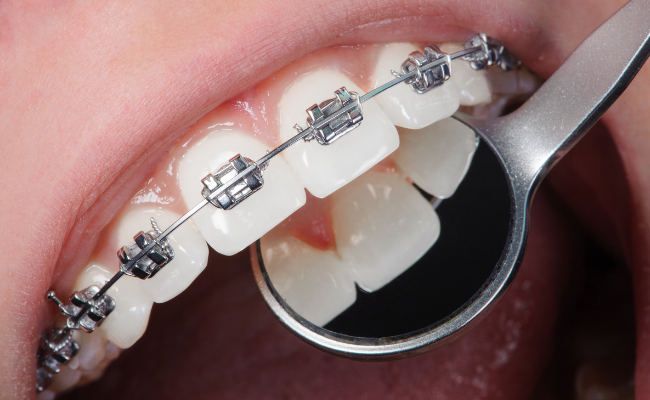Know about Orthodontics
- December 04, 2023
- No Comments

What is Orthodontics?
Orthodontics, a specialized field within dentistry, focuses on diagnosing, preventing, and treating misaligned teeth and jaws, known as malocclusion. Beyond enhancing smiles, it crucially improves dental functionality and long-term oral health. Interventions like braces, clear aligners, and retainers play a key role in correcting these irregularities, offering both aesthetic and functional benefits.
The alignment of teeth is pivotal in determining oral health, impacting issues such as cavities, gum disease, and excessive wear. Orthodontic treatments, by addressing the interaction between upper and lower teeth, effectively mitigate these concerns. Enhancing the alignment of teeth through interventions like braces and aligners significantly contributes to an individual's overall oral well-being.
Why is Orthodontics Important?
The significance of orthodontics lies in its ability to address various dental issues that may arise due to misaligned teeth and jaws. One of the primary reasons people seek orthodontic treatment is to correct malocclusions, commonly known as "bad bites." Malocclusions can result from crowded or crooked teeth, overbites, underbites, and other irregularities that affect the proper alignment of the teeth and jaws. These issues not only impact the aesthetics of the smile but also contribute to problems such as difficulty in chewing, speech impediments, and increased risk of dental issues like cavities and gum disease.
Beyond the functional aspects, orthodontic treatment also plays a vital role in boosting self-esteem and confidence. Individuals with a well-aligned smile often feel more comfortable and confident in social and professional settings, leading to improved overall quality of life.
How Does Orthodontic Treatment Work?
- Orthodontic treatment involves the use of various appliances to gradually move the teeth into their proper positions. The most common and well-known orthodontic appliance is braces, which consist of metal brackets attached to the teeth and connected by wires. These braces apply gentle pressure on the teeth, guiding them into the desired alignment over time.
- In addition to traditional braces, modern orthodontics offers alternatives like clear aligners, such as Invisalign. Clear aligners are custom-made, removable trays that gradually shift the teeth into the desired positions. They are virtually invisible, making them a popular choice for individuals who wish to straighten their teeth discreetly.
- Orthodontic treatment is not only for children and teenagers; adults can also benefit from it. Adult orthodontics has become increasingly common, with many adults seeking treatment to address long-standing issues or improve their smile aesthetics.
- Orthodontists, the specialized dentists in this field, assess each patient's unique situation and create a personalized treatment plan. The duration of treatment varies depending on the severity of the case, with some requiring only a few months and others taking a couple of years to achieve optimal results.
Treatment Solutions in Orthodontics
- Traditional Braces: Traditional braces consist of metal brackets attached to the teeth, connected by wires. They are effective in correcting various orthodontic issues and are often recommended for more complex cases.
- Clear Aligners (e.g., Invisalign): Clear aligners are transparent trays that fit over the teeth and gradually move them into the desired positions. They are removable, making oral hygiene maintenance easier, and are a popular choice for those seeking a more discreet option.
- Lingual Braces: Lingual braces are similar to traditional braces but are placed on the backside of the teeth, making them virtually invisible from the front. They are an aesthetically pleasing option for individuals who prefer a more discreet treatment.
- Retainers: After the active phase of orthodontic treatment is complete, retainers are often prescribed to maintain the achieved results. Retainers help prevent the teeth from shifting back to their original positions.
- Orthognathic Surgery: In some cases of severe jaw misalignment, orthognathic surgery may be recommended in conjunction with orthodontic treatment. This surgical intervention aims to correct the skeletal structure of the jaw.
Benefits of Orthodontic Treatment
- Improved Oral Health: Straightening the teeth makes oral hygiene practices more effective, reducing the risk of cavities, gum disease, and other dental issues.
- Enhanced Functionality: Properly aligned teeth contribute to better bite functionality, reducing problems with chewing and speech.
- Aesthetic Improvements: Orthodontic treatment enhances the appearance of the smile, boosting confidence and self-esteem.
- Prevention of Long-Term Issues: Addressing orthodontic issues early can prevent potential long-term problems, such as jaw pain, excessive wear on teeth, and difficulty in maintaining oral hygiene.
- Increased Comfort: Individuals who undergo orthodontic treatment often experience increased comfort in their daily lives, both physically and emotionally.
Comments (0)